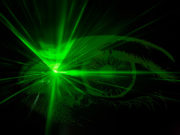Reported laser strikes on aircraft in the United States decreased 23 percent in 2018 from a peak in 2016, the U.S. Federal Aviation Administration (FAA) says.
In a statement issued earlier this week, the FAA said 5,663 laser strikes were reported in 2018, down from 6,754 reported strikes in 2017 and 7,398 in 2016.
“Aiming a laser at an aircraft creates a serous safety risk that violates federal law,” the FAA said. “High-powered lasers can completely incapacitate pilots flying aircraft that often carry hundreds of passengers.”
Lasting eye damage from laser illumination of an aircraft cockpit is rare, but distraction and temporary visual disruptions are far more frequent, authorities have said. Among the temporary visual problems are flash blindness (momentary visual impairment resulting from a bright light that overwhelms the eyes), blurred vision, dazzle (intense glare), headache and discomfort in the eyes.
“The FAA and law enforcement agencies are working hard to increase public awareness of the dangers posed by lasers,” the FAA said. “However, the substantial number of reported incidents clearly show that laser strikes on aircraft remain a serious threat to aviation safety.”
Individuals who purposely aim a laser at an aircraft are subject to civil and criminal penalties, and the FAA has imposed civil penalties of up to $30,800 in some cases. Other federal, state and local law enforcement agencies also pursue cases against individuals for laser attacks on aircraft.
The FAA first recorded the number of reported laser incidents in 2006, when they numbered 384. Reports increased to 3,894 in 2014 and nearly doubled the following year to 7,346.
The FAA and law enforcement authorities have attributed the substantial number of reports to greater awareness among pilots of the laser strike–reporting program, as well as the easy availability of inexpensive laser devices, stronger power levels that enable laser beams to reach higher altitudes and the increased use of green laser beams, which are more visible than red beams to the human eye.
The FAA offers several methods of reporting of laser incidents, including by radio to air traffic control, by using a mobile device or by downloading the FAA’s Laser Beam Exposure Questionnaire.


